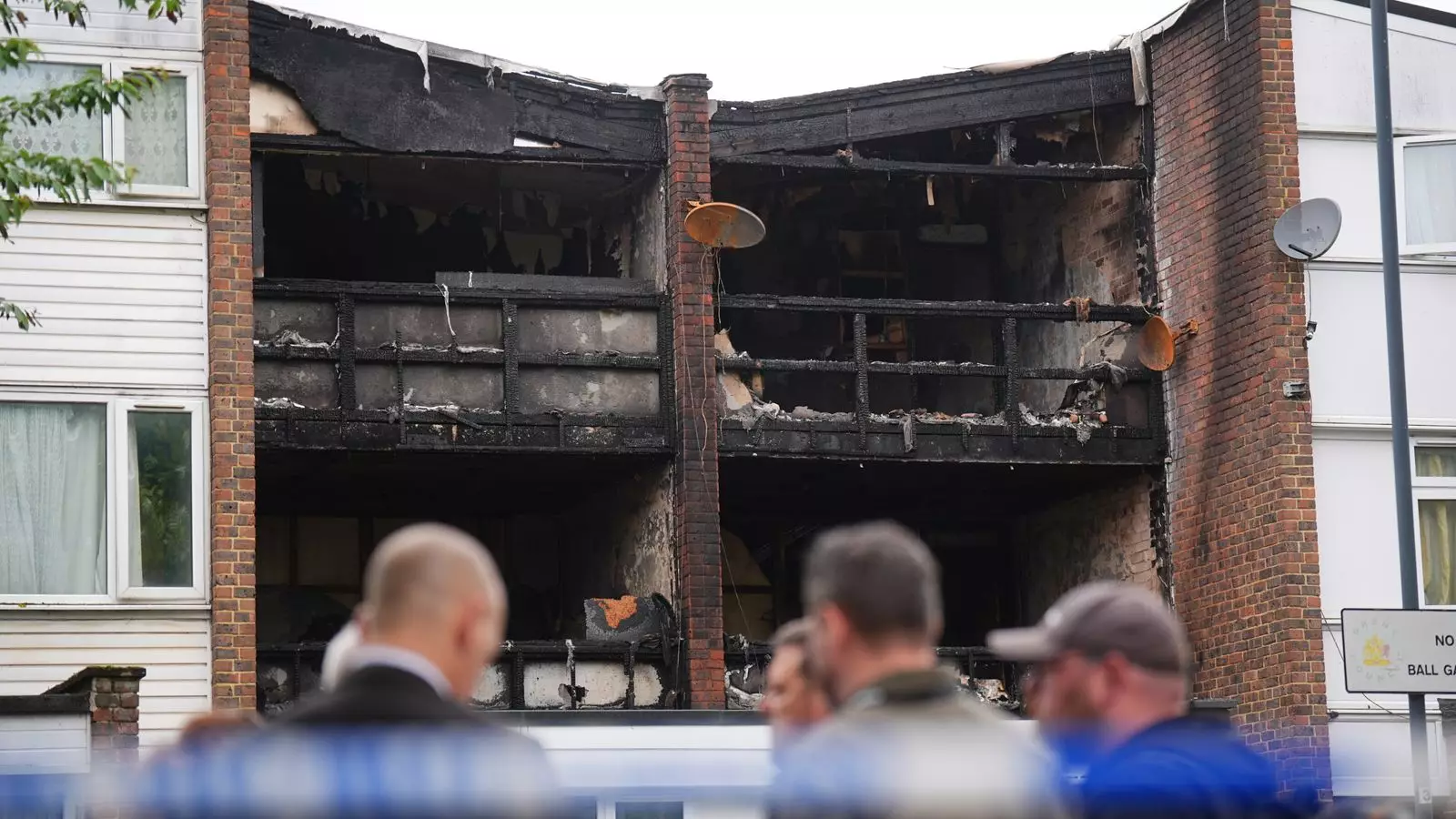In the dead of night, when typical households lay in slumber, a sinister tragedy erupted in Brent, northwest London. The horrifying details are grim: a house fire claimed the lives of a 43-year-old woman and three innocent children, aged 15, 8, and just 4. The very fabric of a tight-knit community was ripped apart in mere moments, leaving both devastation and bewilderment in its wake. How does one begin to process such unimaginable loss? For witnesses and neighbors, the incident has transformed their safe haven into a site marked by despair and anguish.
Witnesses described the scene as one of confusion and fear; frantic onlookers rushed outside, engulfed by panic. One neighboring resident, who understandably chose anonymity, remarked on the surrealism of the incident, stating, “It’s horrible, we saw people running outside. It’s hard to think about.” They were right to question reality—no one expects to witness a scene so tragic within their own community.
The Impact of Community Bonds
For Mohamed Labidi, a local friend of the victims, the impact is almost too overwhelming to articulate. He reflects on the lives lost and acknowledges the strength of community: “They’re very good people, no problems on their side at all. It’s really shocking.” Labidi’s remarks highlight an important facet of human experience—when tragedy strikes, communities often rally to support one another. In this case, however, the very harmony of their neighborhood seems to have been shattered, leaving behind an echoing void.
It’s a stark reminder of our collective vulnerability, especially in a world where safety can dissolve in seconds. It’s not just the immediate vicinity that feels the tremors of such events; ripples extend outward, impacting families, schools, and social groups. This incident is not just a tragic event but a societal rupture that demands introspection. What does it imply about our safety and the measures we have in place to protect those most vulnerable?
Firefighters in the Line of Duty
The London Fire Brigade responded with commendable urgency; eight fire engines and approximately 60 firefighters rushed to confront the rapidly developing blaze. However, what should have been a heroic narrative quickly became a page of sorrow. The fire, which damaged two adjoining terrace houses, was described as “well-developed”, leaving crews grappling with an immense challenge. Despite their best efforts, including rescuing the woman and one child from the inferno, tragedy reigned supreme as they were ultimately declared deceased.
Firefighters, typically heralded as heroes, were left to grapple with their own feelings of grief and helplessness in the aftermath. LFB assistant commissioner Keeley Foster’s acknowledgment of the “extremely tragic incident” underscores the emotional toll that such calls can take on emergency services. They readily confront danger, often at the expense of their own emotional wellness, only to face the bitter reality when rescue efforts turn into loss.
The Quest for Truth
As law enforcement agencies work hand in hand with the London Fire Brigade to ascertain the cause of this disastrous fire, one can’t help but ponder the potential motives behind such a grievous act. A 41-year-old man was arrested on-site, whose connection to the victims transforms this tragedy into something far more complex—a murder suspicion that leaves the community reeling with questions. How can suspicion hang over a neighborhood already burdened by grief?
The ongoing investigation draws an almost palpable shadow over the community—one that begs the inquiry of how well we truly understand the lives of our neighbors. The visceral fear provoked by such events compels society to consider what lies beneath the surface of communal everyday life. Are we truly aware of the struggles that each individual faces within our own neighborhoods?
Voices of Concern and Solidarity
This incident has not gone unaddressed by public figures. Mayor of London Sadiq Khan and local MP Dawn Butler both expressed profound sorrow, emphasizing their connection to the community affected. Their statements of support are indeed paramount, for it signals that amidst chaos, solidarity can still thrive. Yet, what tangible support can be proffered during such a harrowing time? Words are sometimes insufficient in the face of despair.
The political discourse surrounding community safety, mental health, and emergency response must shift towards a more supportive structure to prevent tragedies such as this from being a tangible reality in the future. Grieving families indeed need more than platitudes; they require systematic change that prioritizes safety and well-being over all else.
In this complex and multi-faceted tragedy, one thing is crystal clear: no community should have to endure such overwhelming anguish. The lives claimed in Brent stand as solemn reminders of the fragility of existence, demanding a reckoning not just among those directly affected but for society as a whole.


Leave a Reply